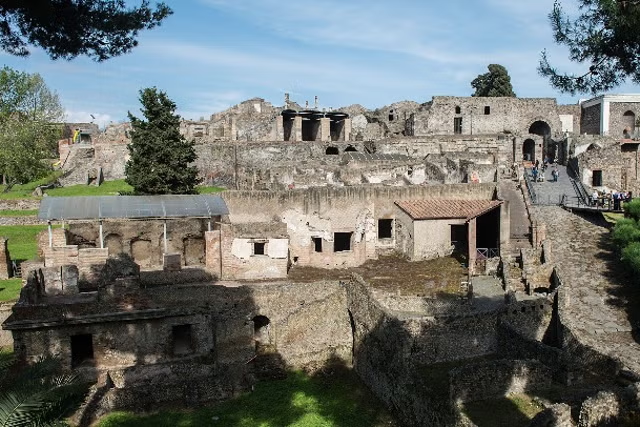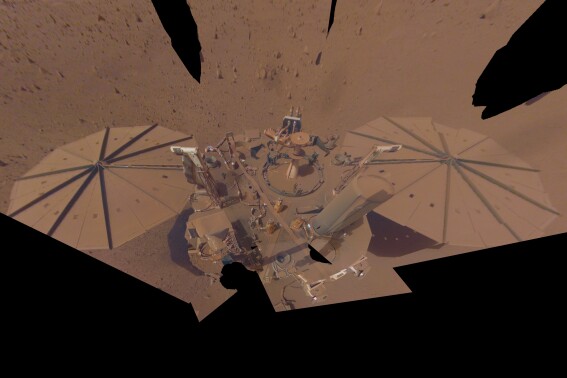DNA analysis has revealed that a pre-Hispanic child sacrifice victim found in a "unique" burial in Mexico had parents who were unusually closely related.
The burial was originally excavated during an archaeological research project conducted in the late 1950s and 1960s at Paquimé, an archaeological site located in the northwestern Mexican state of Chihuahua. However, the latest research represents the first genetic study of this child, who, radiocarbon dating suggests, was 2-5 years old at the time of death and lived between A.D. 1301-1397.
The authors of the latest study, published in the journal Antiquity, argue that this child may have been sacrificed as part of an elite family's ritual to consecrate a special building and grow their sociopolitical power.
"This is an important finding because archaeologists are still working to understand the social structure at Paquimé and what role (if any) ritual and religious leaders played there," study lead author Jakob Sedig with Harvard University told Newsweek.
Paquimé, also known as Casas Grandes, is one of the largest and most important archaeological sites in the combined region of Northwest Mexico and the Southwest United States (Northwest/Southwest).
The initial excavations at the site in the mid-20th century, conducted as part of the Joint Casas Grandes Project, produced much of what is known about the site.
"The site consisted of massive adobe structures, monumental architecture including cruciform- and serpent-shaped mounds, an underground well, an aqueduct, large roasting pits, plazas, and millions of artifacts, including shell and other exotic goods imported from hundreds of miles away," Sedig said.
At its apex, from roughly A.D. 1200 to 1450, Paquimé was the sociopolitical center of the Northwest/Southwest region and a hub of the pre-Hispanic (or pre-Columbian) Mogollon culture.
While archaeologists have extensively investigated the site, little was known about the social organization of the local population and its genetic makeup. Questions remained over how Paquimé's inhabitants were biologically related to each other and their neighbors.
"Ancient DNA data from Paquimé will be crucial for our understanding of how the people who lived in the ancient Northwest/Southwest interacted with one another," Sedig said.
Researchers already knew that the burial context of the Paquimé child who appears to have been a sacrifice victim was unique—beneath a roof support beam in a building dubbed the House of the Well. This building is thought to have been the ceremonial center of the site due to the valuable ritual objects found within and its association with a sacred underground well. The fact the child was interred here suggests the individual came from an elite lineage.
To understand more, Sedig and colleagues analyzed the child's DNA, which revealed that his parents were closely related.
"The data suggest his parents weren't as closely related as siblings but were more closely related than first cousins. They shared about 25-50 percent of genetic material. We could not determine the exact relationship of the child's parents, but they would have been half-siblings, aunt/uncle-niece/nephew, grandparent-grandchild, or some other similarly closely related pair," Sedig said. "We had no reason to suspect the child's parents were closely related."
In most societies, relationships between close kin are viewed as taboo. But in some ancient cultures, the elites were not subject to the same taboos as everyone else and may have engaged in such practices.
The authors propose that the sacrifice was carried out to consecrate a ritually important building. The fact that the child was a product of a close relationship within a specific lineage may been symbolically significant.
"[The authors] argue that the close genetic relationship of the child's parents, revealed through this analysis, and the special depositional context of the burial reflect one family's attempts to consolidate and legitimize their social standing in this ancient community," the study abstract reads.
The exact role that child sacrifice played at Paquimé or in the broader region is somewhat unclear. However, previous research has shown that sacrifice played an important role in Mesoamerican societies more generally and was part of the fabric of everyday life.
"In other societies—for example, Maya and Aztec—elite sacrifice was especially powerful," Sedig said. "We don't think this child's unique burial beneath a post—the only such burial we know of at the site—in a ritually significant building and with special grave goods was coincidental."
"There were other sacrificial victims at the site (in a building called the House of the Dead) who were not treated nearly as well as the child in our study. So it seems to us that there was something special, unique, and/or important about the child sacrifice in our paper."
The data generated from the child's remains will also help researchers understand the genetic structure of the people who lived at Paquimé and in northern Mexico.
"Our study revealed that the child was part of the local population who lived at the site and not part of a lineage that migrated to the site," Sedig said. "Up to this point, studying ancient DNA from Paquimé (and northern Mexico in general) has been extremely difficult due to the hot environment, which causes ancient DNA to degrade rapidly."
Do you have a tip on a science story that Newsweek should be covering? Do you have a question about archaeology? Let us know via science@newsweek.com.
References
Sedig, J., Snow, M., Searcy, M., Punzo, J. L., LeBlanc, S., Ramos, F., Eccles, L., & Reich, D. (2024) High levels of consanguinity in a child from Paquimé, Chihuahua, Mexico. Antiquity, 98(400). https://doi.org/10.15184/aqy.2024.94
Disclaimer: The copyright of this article belongs to the original author. Reposting this article is solely for the purpose of information dissemination and does not constitute any investment advice. If there is any infringement, please contact us immediately. We will make corrections or deletions as necessary. Thank you.



